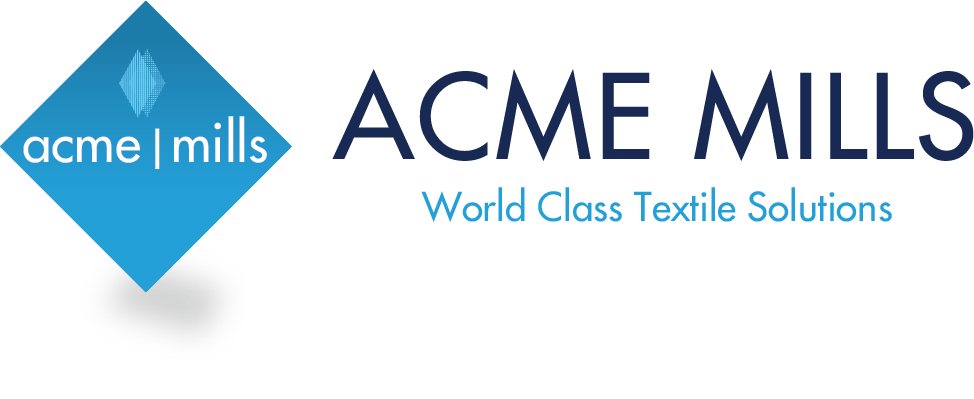Before learning about Textile Industry, first we should know what is textile? The basic meaning of Textile is woven or knitted fabric made from yarn. But apart from fibre, yarn and fabric or any other product made from these combinations are defined Textiles. Textile is also associated with clothing production. Fibre is the raw material of textile which may be natural or man-made.
Definition Of Textile Industry
The textile industry is the industry which involves the sections like research, design, development, manufacturing and distribution of textiles, fabrics and clothing.
Up until the revolution of industries, fabrics and clothing were made in the home by individuals for personal use. Sometimes they were also resale on a small scale. The Textile industry was born with the invention of the flying shuttle in 1733, the spinning jenny in 1764, and the power loom in 1784. Then the fabrics and clothing began to be mass produced. When James Watt’s improved steam engine in 1775, Eli Whitney’s cotton gin in 1792, and Elias Howe’s sewing machine in 1846 all contributed greatly to the success of the textile industry as well.
Now a day, the textile industry is a global phenomenon comprised of every business involved in the developing, producing, manufacturing, and distribution of textiles. Now it is also a very complex industry. It starts in agriculture with fibre production, husbandry of sheep and silkworm, mining of metals and minerals. Then these fibres are processed into yarns, fabrics and apparels. This includes, spinning mills, weaving mills, knitting mills, dyeing mills, garments. In addition, companies that sell buttons, zippers, knitting supplies, sewing machines and threads, laces, looms, and drapery hardware are also related to this industry.
Departments Of Textile Industry
Now we are going to discuss about the departments of textile industry in brief as follows –
Spinning
The conversion of fibre (natural or man-made) into yarn is called spinning. The spinning department has many steps like blowroom, carding, drawing, combing, simplex and ring frame. Blow room is the first step of spinning. Here the cotton bale is turned into uniform lap of particular length by opening, cleaning, blending or mixing. The next step is carding. Carding is called the heart of spinning. The third step is drawing. Here the slivers are blended, doubled, leveled and drafted. The next step is combing. It is a process of straightening and parallelizing of fibres and also the removal of short fibres and impurities. Then the step comes is simplex. Here slivers are attenuated and also given a small amount of twist. Then the slivers are turned into roving. The last step is ring frame. The roving, on bobbins, is placed in the ring frame, where it passes through several sets of rollers running at higher rates of speed and is finally drawn out to yarn.
Fabric Manufacturing
There are different methods of fabric manufacturing. Among them the weaving and the knitting are mostly used. Weaving is the major method of fabric manufacturing. The technique probably became known before spinning. Primitive people may have observed the grasses and twigs in the nests of birds, and thus discovered how they could make clothing for themselves. Spinning developed when people discovered that the raw materials could be improved before they were woven. In the course of time, rude looms were made, which were crudely simple and hand-operated. Now a day different modern looms have been developed but essentially performs the same operation as the simple hand operated loom. Weaving department also has different sections like winding, warping, sizing, looming. Knitting is the second most frequently used method of fabric manufacturing. The popularity of knitting has grown tremendously within recent years because of the increased versatility of techniques, the adaptability of the many new man-made fibres, and the growth of consumer demand. Today the uses of knitted fabrics range from hosiery, underwear, sweaters, slacks, suits and coats.
Wet Processing
Wet processing is the department where desizing, scouring, bleaching, washing, mercerizing, dyeing etc. are done. Desizing is done to remove the sizing materials. Scouring is done to remove the fats, oil, wax by using alkali. Bleaching is done to remove the natural color from the fibres. Washing is done to clean the textile material, Mercerizing is done to make the fabric brighter than bright and dyeing is done to make the fabric mono uniform colored. Different types of machines like kier boiler, J-box, Jet, Jigger, Pad mangle, Winch dyeing machine etc. are used in wet processing department.
Garments Manufacturing
The processing steps and techniques involved in the manufacturing garments for large scale production on industrial basis for business purpose are called garments manufacturing technology. Garments factories are classified into three categories as woven garments factory, knit garments factory and sweater garments factory. The factory which producing garments from woven fabrics is called woven garments factory. The factory producing garments from knit fabrics is called knit garments factory. To produce garments we need sewing machines but the sewing machines are of different types used for different specific types of stitches. Name of some common sewing machines used in the garments manufacturing are mentioned below –
- Lock stitch sewing machine
- Chain stitch sewing machine
- Over lock sewing machine
- Flat lock sewing machine
- Blind stitch sewing machine
- Bar Tac sewing machine
- Button hole sewing machine
- Button attaching machine
- Label sewing machine etc.
Though a major part of this textile industry involves in clothing manufacturing, many people are employed designing new fashions and marketing them for production. Some other textile companies produce sheets, blankets, pillowcases, and towels. Importing and exporting fabrics, garments are also a part of the textile industry. Also the clothing designers and manufacturers often have buyers to travel around the world to look for the right cloth to create their fashions. Because of the type of material that is locally produced varies greatly from one country to the next.
Lastly we can say that, the textile industries provide us with the above goods while providing a valuable source of income for many people all over the world.









